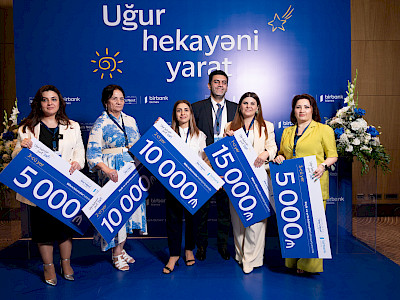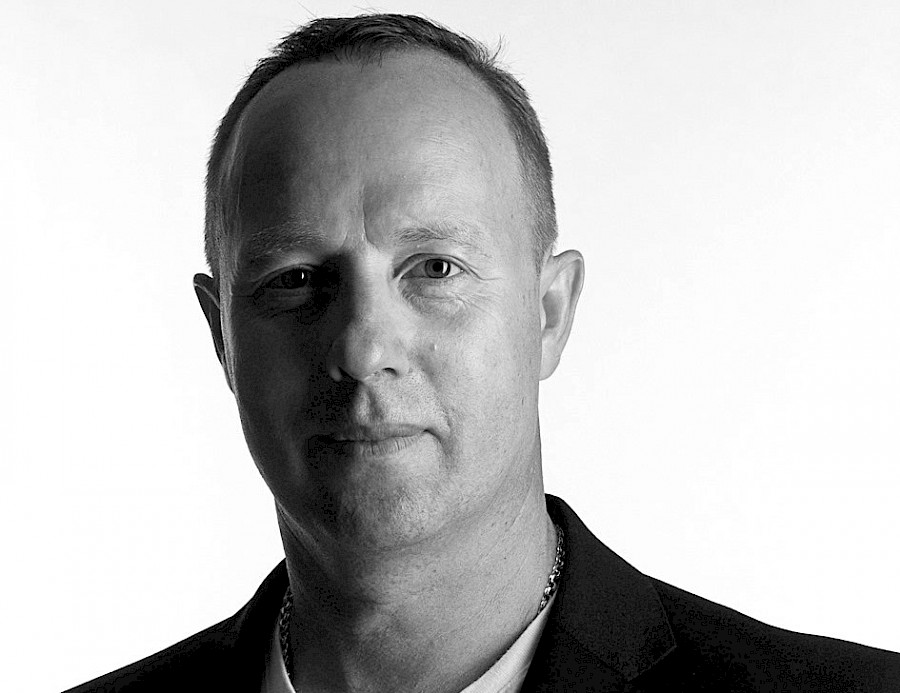
He arrived in Yerevan on a bike, which he pedaled all the way from Vilnius. It was a dark time when the idea of *Miatsum – a perilous dashnak slogan, which would lead to a bloody war in Karabakh and turn Armenia into a country of victorious *Tseghakronism – gained momentum in Armenia. It was a time, when a population of two hundred and fifty thousand Azerbaijanis in Armenia got ethnically cleansed from their native places by means of the most inhumane expulsion, and subjected to violence and atrocities. *Countless people died in the cold mountains and across icy rivers. Obviously, Armenians never told Ricardas Lapaitis anything about it, except they "providently" warned him not to travel to Azerbaijan if he did not want his head "cut off." and Ricardas did not. He used to travel a lot in Transbaikal, Siberia, Urals and once spent a whole year in the Northern Polar circle. In february 1992, he wanted to visit Central Asia and continue over to China. Transiting through Baku, he would embark on the ferryboat to cross over the Caspian Sea and salute Central Asia! But he was destined for another journey – one through an endless corridor.
*The slogan Miatsum embodied the idea that Nagorno-Karabakh should be annexed to Armenia and the Azerbaijanis inhabiting those lands, should be expelled from their native lands. In Armenian society, Miatsum gained widespread support. Thus, majority of Armenians sided with this aggressive idea
*In Armenian the term "tsekhakron" means "tribe," "clan," or "race.” It gave rise to the Nazi ideology founded by Garegin Nzhdeh, an accomplice of Hitler and the leader of the Armenian SS Legion
*Over 250 thousand Azerbaijanis living in Armenia were forcibly expelled from their ancestral lands in over 1987-1989. This purge resulted in 216 of them brutally killed, including 57 women, 5 newborns, 18 children of different ages, and 1154 injured
Shakhin
Murky and cold in February, Baku appeared unfriendly to Ricardas. As soon as he got off the platform, a street gang clung to him in an underpass. Having discovered that the visitor's name was Richard, the bullies jokingly exclaimed that this German probably has some money they could use. At his 23, Lapaitis was not easy to scare. He reached down for a knife in his backpack and the guys ran away, fearing that he had a gun. Though, they snatched his bag with his money as they fled. By the time they realized that he had no gun, Ricardas managed to jump out of the subway car to hide in the Teze Pir Mosque nearby. Unluckily, it was time for the Friday prayer, and the mullah requested the foreigner to leave the temple for the time of worship. Ready to fall dead from fatigue and hunger, Ricardas desperately staggered towards the exit, expecting the thugs to await him there. Then someone called him over. It was a young man of no more than eighteen, who stood next to a wall surrounded by a group of other young men. He instructed Ricardas to follow him. Seeing no other way out, Ricardas followed the stranger. Lapaitis would have been quite surprised, if somebody had told him that, after a while, this stranger would become his friend, or that somehow this meeting would eventually lead to a ride in Heydar Aliyev’s personal vehicle in Ordubad, Nakhchivan to visit his friend. So, a stranger led him out through the back door and into a room full of paintings.
"The workshop of the student and artist, Shakhin Babayev, in a sleazy house at 38, Dmitrov Street, turned into my asylum for several days. We had survived on Shakhin's miserable scholarship that could barely cover black bread and a cup of tea. Once I put stale bread before me in a teahouse. As I prepared for a meager meal, a man with a tray full of food suddenly approached me. The tray was full of food including meats, salads, and snacks... I almost passed out, as I had been hungry for several days. A man put the tray in front of me and left without turning around. "Why? You don't even know me!" I asked him. Since that moment, something deep in me turned upside down, and Azerbaijan became a forever home. From then on it forever remained with me as a place, where complete strangers would share their shelter and food with someone they didn’t know. This is something one can never forget."
Something else struck the Lithuanian visitor – the painting with the image of Christ. Brand new, it caught Ricardas' eye as soon as he entered Shakhin's workshop. "Why does a Muslim paint Christ?" – this question haunted him. Seemingly on the verge of despair, Shakhin had the seal of grief on his face. It turned out that he lost his brother during the *terrible January events. Shakhin’s family came from Ordubad. His parents were ordinary people: his dad was a radio engineer, and his mother worked at the children's hospital. The brothers came to Baku to study. The elder, Rahim, was only twenty years old when he was killed outside the Salyan Barracks, saving his friend, Bakhaddin. He helped him climb over the fence, but could not make it himself. Ricardas perfectly understood Shakhin, as similarly terrible events also occurred in Vilnius. So, why did he draw Christ? Shakhin said that he had read his teachings and was struck by Christ's command to forgive.
"The next day Shakhin's friends came over. Having heard that I was robbed, they raised money and handed it to me with the following words: "We don't want you to leave like that. We want you to have good memories of Azerbaijan." They even apologized for the incident. This was overwhelming.
Then they told me about the war in Karabakh. Blockaded civilians were dying there and the world had turned a blind eye to it all. One night, when Shakhin was asleep, I thought about how I could thank him and his friends. I decided to honour them, the memory of the victims of the January events, and Rahim, by visiting Karabakh at least for a single day. I pulled out my map and began to study how far it was. What kind of roads lead there?
I saw the railway reaching Aghdam. In the dark of the night, leaving behind some of my personal belongings and a letter for Shakhin, I set off to the railway station that was not far from Dmitrov Street. Once on my reserved seat, I immediately closed my eyes and enjoyed some sound sleep, until I had to wake up. Incidentally, it was not some special mission that brought me to Karabakh but a sense of gratitude.”
*On January19, 1990, the Supreme Council Presidium of the USSR without the consent of the Supreme Council of Azerbaijan issued a Decree On introduction of the state of emergency in the city of Baku. This was followed by a military operation led by Soviet Defense Minister Marshal Yazov. Baku garrison units and landing troops from warships moved to Azerbaijan went on the offensive. Heavy military equipment easily destroyed the barricades. Troops used tear gas and shot to kill. Soldiers shot passers-by in the streets, apartment buildings, and cars. People were crushed by the caterpillars of military vehicles.
The large scale action of Soviet army has led to the death of 131 persons in Baku and other settlements of the Republic; 400 persons were arrested; 744 persons were wounded; and 4 persons were missing. Hundreds of houses were burned, and material damage was caused to citizens and the city economy
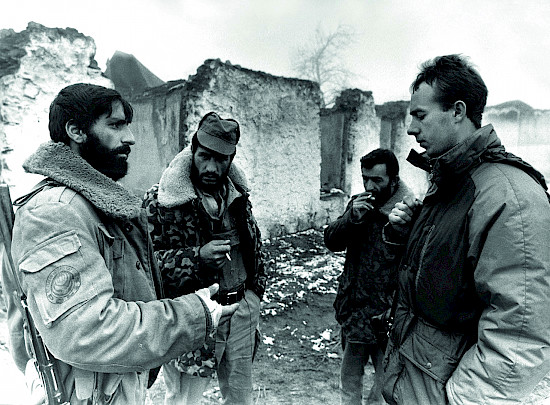
A vow
"On February 28th, 1992, I got off the train in Aghdam into total darkness. Then, I had to wade through the darkness for quite a while, until a faint light appeared far away. Having reached the light, I saw an elderly man sitting in front of a slim candle. It turned out, that there was a hotel nearby. It made me happy to think that I found a place to sleep. However, pointing to the ground, the elderly man seemed to be offering for me to spend the night here. I was confused. By the time I understood what he meant, my eyes were finally used to the dark, and I could distinctly see human figures lying motionlessly around on the ground and staring into nowhere. Meanwhile, people kept coming in. These were the survivors of the *Khojaly massacre.” "The daylight did not dispel the dreadful reality around me. On the contrary, it only elucidated the scale of the tragedy. I still shiver with every remembrance of Khojaly. I went through a horrible experience and stayed in Aghdam. Hungry all the time, I spent the nights in a hotel without water or electricity. There were some storage facilities nearby the Aghdam Mosque. It was there that the dumper trucks brought dozens of dead bodies, which were either bought back from the Armenians or exchanged. Some of them were beheaded. Others had their eyes poked out. They included children with obvious marks of torture and mutilation.
During my short stay, they brought about two hundred corpses with severed fingers, broken teeth, and chopped ears, including the corpse of a man with no scalp. Among many killed, I saw a girl of about six years of age. Her body was covered with cuts and gunshot wounds. Her kidneys barely hanged out from underneath the ribcage; moreover, she was doused with gasoline. While on the sanitary train, I was shown journal recordings of more than 596 cases of limb amputations, due to deep frostbite. It was a hellish scene to watch.”
In his book "I Film the War" (2001), stringer Yuri Romanov tells the story about a meeting he had on a similar sanitary train with a six-year-old girl from Khojaly. She wore an eye patch. "The patch completely covered both of her eyes. Without turning off the camera, I leaned towards her to ask: "What's wrong with you, sweetheart?" She replied: "My eyes are burning... My eyes are burning... Uncle! My eyes are on fire!" The doctor touched me on the shoulder to explain: "She is blind. Her eyes were scorched with cigarette butts. When she was brought to us, cigarette butts stuck out of her eyes..." By the dawn, Romanov discovered gray hair on his temples...
"None of the Khojaly inhabitants I interviewed knew about the open corridor. Armenians invented the myth after their atrocities became known to the whole world. Armenian militants ambushed, chased, killed, tortured, and captured the Khojaly inhabitants. They even brought some of the captives to Yerevan and continued to abuse them. At the Aghdam hospital, doctors had identified cases of rape of underage girls. Some captive inhabitants of Khojaly wanted to commit suicide..."
One day, the Armenians had offered to exchange the corpses of seven captive girls from Khojaly. As the negotiations began, the Azerbaijani side had contacted the girls by radio. "You'd better trade the corpses for our guys or stolen cattle. After the bullying we've endured here, we're not going to live anyway," the girls replied. Vadim Belykh, Izvestia's reporter, described a five-year-old daughter of a local doctor, Malik Ismayilov, asking her father with an unchildlike countenance: "Daddy, if it starts, you first
kill me and my mother, and only then die yourself."
Over three thousand civilians remained in the blockaded city with no electricity, heat, or running water. About half of them were elderly people, women, and children. A handful of defenders comprised a local 80-man battalion: 20 members of the National Army, and 60 local police officers, including those ensuring the airport security.
"If the Armenians did not intend to kill civilians, why did they assault Khojaly at 21:00?
*On February 25, 1992, at 21:00, Armenian bandit formations supported by MRR 366 of the Russian Federation Defense Ministry (three battalions accompanied by mercenaries brought in from abroad) attacked Khojaly. The military aggression resulted in 613 people killed, including 106 women, 63 little children, and 70 elderly people. More than 1000 civilians, including 76 children, were wounded to different extent and became physically handicapped. 1275 persons were captured, 8 families were completely destroyed, 25 children lost both parents, 130 children lost one parent and 56 persons were killed with special cruelty: burnt alive, skinned, their eyes were put out, heads cut off, and pregnant women had their abdomens prodded
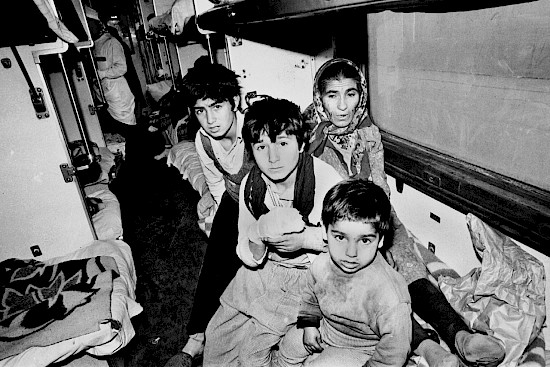
Why would they conceal that the attack was participated by the second battalion of the *Motorized Rifle Regiment 366, commanded by Major Seyran Oganyan, (former Minister of Defense of Armenia) the third battalion, directed by Yevgeny Nabokikhin, chief of staff of the first battalion Valery Isayevich Chitchyan, and over 50 Armenian officers and warrant officers? Illegal 5.45 caliber ammunition and chemical weapons were used during the attack. On February 25, Khojaly was bombarded from Khankendi with 122mm shells filled with cyanide. Lieutenant-General Yuri Grekov had reported: “Grad and Uragan artillery systems were used to cleanse the territory of Khojaly of Azerbaijani inhabitants”.
Another witness of those terrible events of 1992, Yury Pompeyev, mentioned a secret message from Khankendi, which reported that "during the operation against Khojaly, over 20 regiment servicemen died and their corpses were blown up in the AFV Park’s sixth lock-up garage of MRR 366, to conceal their participation in the operation. Listed as deserters, these servicemen had their leaves issued retroactively.” It is no secret that Lieutenant General Iosif Oganyan arrived in Karabakh from the Transcaucasian Military District Headquarters with one million rubles to bribe the officers of MRR 366. Defectors reported that the militants had regularly used IFVs and APCs from the Military Base 18920 stationed in Khankendi against the residents of Azerbaijani settlements. The rental price per day for one APC totaled 2,000 rubles. Armenians provided members of the regiment with 20 liters of alcohol for every time they shelled Shusha.
"They told us, we were Christians, and had to fight against Muslims. We had to survive in inhumane conditions. Unable to endure it, we had to leave the regiment and defect to Khojaly,” a private from MRR 366, Yuriy Yakhovich explained.
Robert Kocharyan and Serzh Sargsyan, future presidents of Armenia, also took part in the assault, as did elite groups of Armenian mercenaries from France, Syria, and other parts of the Middle East. Yuri Viktorovich Girchenko, who authored the book "The Army of the State, Which Doesn’t Exist" (2002) and personally served in the MRR 366 in Karabakh, testified the following: "The Armenians started machine-gunning the Khojaly refugees... they indiscriminately killed adults, children, young, and old alike... From this flow of people, the Armenians singled out hostages, killing some on the spot and cutting the heads of the members of Azerbaijani OMON with axes... they blinded the hostages, cut off their ears, scalped them, and then killed them."
Nearby Aghdam, Reuters photographer Frederica Langan saw two trucks filled with Azerbaijani bodies: "I counted thirty-five in the first truck, and I think the second truck had about the same number of corpses. Some had their heads cut off and many had multiple burns. These were men: some of them had khaki uniforms on them.”
“A barrage of artillery fire rained down on the city," said S. Tangirov, one of the soldiers of MRR 366 that refused to take part in the massacre. “I will never forget what I had to see... The houses with people in them burned like candles; the screams of the wounded and the death wails still resound in my ears...
Supported by military equipment, Armenians entered the city as soon as we left it together with the surviving residents. However, we were shelled again on the way to some village (Nakhchivanly – ed.). People never expected to come under the militants' fire just there.
They were falling to the ground... Many were severely wounded and killed nearby that village. We could not take them, as we had to save those who were alive..."
The head of the counterintelligence branch of the military unit N02270 in Nagorno-Karabakh of the 366th regiment, colonel of the Main Intelligence Directorate of the Russian Federation Vladimir Romanovich Savelyev prepared a report on the military operation conducted by Armenian terrorist organizations with the support of the military units of the Russian Federation in Nagorno-Karabakh.
The letters were sent on November 26, 1992, March 19, 1994, August 22, 1998, and finally on December 16, 2000, to the United Nations and the Main Intelligence Directorate of the Russian Federation (Report to the GRU was sent under the pseudonym "Officer Pugachev"): "...I cannot but write about all these events. Everything was happening before my eyes. I cannot forget the bullet holes in the bodies of women, children, and pregnant brides. May the Azerbaijanis forgive me, as I could not do anything to help them during this inhuman and bloody massacre. I could only send this 19-page secret report to the Kremlin, the Defense Ministry, and the generals of the GRU. Let them know about the disgraced honour of a Russian officer".
"It was a preplanned act of intimidation, revenge, and ethnic cleansing. Russian journalist Victoria Ivleva – had entered Khojaly with the Armenians – wrote that only the dead remained in the town after the assault. A Lithuanian journalist Arturas Zuokas, currently the Mayor of Vilnius, filmed the Armenian names written on the fences at Khojaly, as evidence of barbarism and looting. Armenians were dividing the property of the murdered people while the streets were filled with the corpses of the Khojaly inhabitants."
"I remember the story of a nurse that had pulled out a wounded guy. When crossing the Gargar-Chai River with the guy, she had lost her boots, but never left him behind. Ambushed by Armenians, she kept dragging him along, though the guy was hit by another bullet. Suddenly she heard Armenian militants catching up with them. She laid down by the murdered man and smeared her face with
his blood pretending to be dead. One of the Armenians wanted to shoot her in the head, while another said that she was already breathless. Her name was Susan. She survived and made it to Aghdam. On the way, she saw many former inhabitants of Khojaly killed and mauled, including little children.”
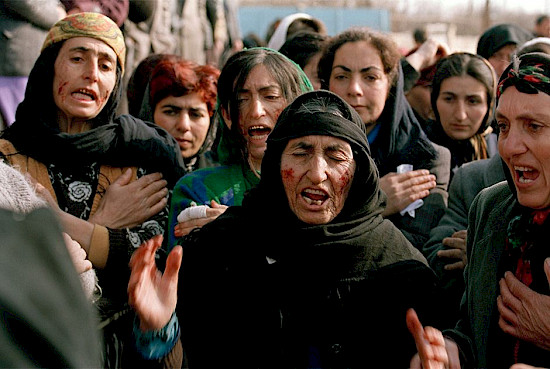
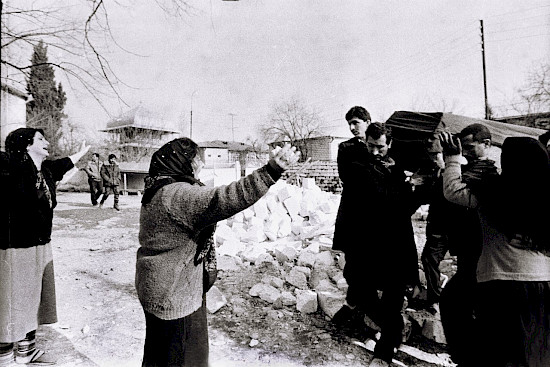
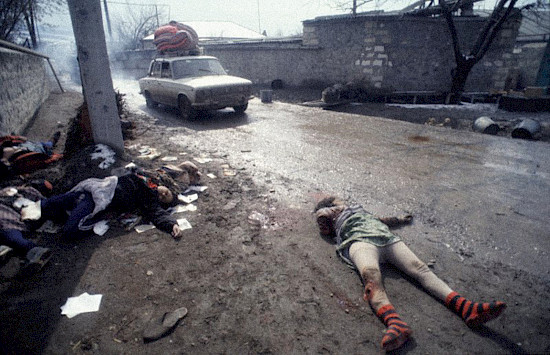
"Portrayed in the film, Endless Corridor, Valeh Huseynov has had a very difficult life story. He too fled the surrounded village through the forest. At the outskirts of Aghdam, when the salvation was near, he lost his young wife, Saadat. Translated from Azerbaijani, her name means "happiness." The movie featured soldiers that brought her breathless body wrapped in a blanket, as if symbolizing an eternally destroyed hope for happiness of Khojaly’s inhabitants.
In fact, Saadat had saved her husband's life. An Armenian bullet hit her in the back as Valeh was carrying her on his shoulders. That is when the bearded Armenian men began to approach him. If it weren’t for their machine gun getting jammed in that moment, they would have shot him right away. When they approached, Valeh snatched the machine gun from the Armenian militant and used it to whack them. The other Armenian militants swiftly knocked him down with their gun butts. Captured by Armenians, he woke up in Khankendi. He was severely beaten and subjected to unbearable torture. When they found out that he was a musician, they burnt his hands to make him incapable of playing a musical instrument. He was ransomed and brought to Aghdam in a horrible state.”
"I often went to the Mosque for some hot tea. Women were crying every day at the Aghdam Mosque. They looked terrible and tore their hair with grief and lacerated their faces with fingernails. Meanwhile, the corpses kept coming in. Streams of blood had flowed by those warehouses. Being only 23 years old, I was scared to see that. I wanted to forget everything I had seen, like a nightmare. However, the women and mothers of the dead children had pleaded with me: "Son, we don’t know what country you’re from. We don’t know who you are! When you return to your homeland, write something about us, please! Write what you have seen here." On that day, I vowed to them that I will write about it."
By the time Ricardas returned to Baku, Shakhin knew that he went through the Khojaly nightmare. Ricardas told Shakhin that he must return to Lithuania to fulfill his promise. Once again, he left his things with Shakhin and took the train to Vilnius via Moscow.
"Since I was not a journalist, it was quite a task to publish an article about the Khojaly genocide in Vilnius! No one could understand how I got there. Yet, I did it! I thank Algimantas Zhukas, the editor of the Respublika Newspaper’s political department, for believing me. There was a clamor afterward, as the Armenian diaspora threatened to kill me. They just could not find me. But I kept my vow."
Crime and punishment
"Unfortunately, the Khojaly atrocities were not the only crime committed by Armenians then. Although the Armenian military agencies used chemical weapons along the entire front line of Karabakh, they neither spoke about it in the press nor published any information abroad. Azerbaijanis handed out gas masks and warned the population to avoid drinking water or touching anything. It took some time for the then incumbent leadership of Azerbaijan to realize the importance of inviting international observers. Established under the Ministry of Health only in 1992, a special commission of medical professionals began to conduct laboratory tests. At that time, the medical institutions and laboratories of Azerbaijan employed highly qualified Russian specialists. They had no personal interest in the investigation results. Conducted objectively and without pressure, the research had to do with suspicions that Armenians deployed Russian weapons.
On May 12, 1992, 15 artillery shells exploded in Aghdam, as the city was simultaneously bombarded with chemical weapons. Four of them struck the central hospital, while 20th of January Street, Fuzuli Street, Meshadi Abbas Street, and Sabir Street were all hit by shells. Another seven shells crashed into private homes. The survivors of the chemical attack were brought to the Baku Central Hospital with symptoms of toxic poisoning. They suffered severe suffocation, kidney and heart failure, had slow pulses and fluid-filled blisters on their skin. Doctors were powerless: the wounded died after intensive care. The forensic examination revealed a presence of mustard gas, phosgene, and poisonous substances of the cyanide group in their bodies. Wounded in Aghdam, Aydin Huseynov (born in 1969) was delivered to the hospital at about 10 p.m. He was pronounced dead at 3 a.m."
"Before long, the prohibited weapons were being openly deployed. On June 5, 1992, artillery shells containing a cyanide group of substances struck the village of Munjuqlu in the Tovuz District. The same projectiles also exploded in the town of Jabrail. One of them fell near the building of a boarding school. The same year, four shells hit the centre of Tartar (another Karabakh town), killing many civilians. The inhabitants of Fuzuli not only suffered from chemical bombardment, but also from bullets used by snipers to shoot five civilians.”
"The Azerbaijani Ministry of Health sent a letter to the Ministry of Internal Affairs describing the contents of the exploded shells. It was claimed that the projectiles contained tiny needles with drill bits. Should any of them strike a person, death would inevitably occur within a few hours. It has been established that the weapons deployed comprised at least several types of chemical substances. Their explosion would be followed by the appearance of droplets, the rising cloud of gas, or scattered white powder. Particularly, noxious substances included mustard gas, phosgene, and diphosgene. By the way, mustard gas was also used to strip the trees of their leaves during the Vietnam War. On May 14, 1992, Colonel A. Mamedov of the medical service presented cartridges filled with white powder. The laboratory test identified them as cyanides. Hit by the bullet, a person felt severe burning in their eyes and could lose their eyesight. They also felt a burning sensation in the respiratory tract. Rashes and blisters appeared on their skin. A few grams of this substance would incapacitate a military service member.
The Azerbaijani doctors were faced with a difficult task: they had to treat victims of a chemical attack. Few medical doctors had any experience in this field.”
"While investigating war crimes, I met with a high-ranking official of the Ministry of Health of Azerbaijan. He showed me the results of laboratory tests, death certificates, the names of the dead, and the locations of strikes with chemical weapons.
When I returned from Karabakh, I presented the Lithuanian Ministry of Health with the all of the facts I had gathered. The consultant on disaster medicine J. Jevechka explained that the storage of chemical weapons was as rigorous task as the storage of bacteriological and nuclear weapons. They can only be accessed through the official approval of the country’s highest military authority. In other words, it required the permission of the head of the state. They cannot be stolen or acquired in any other way, as these substances are highly hazardous and *forbidden. Caught in their impact zone, people begin to suffocate. Once they get into the body, these droplets will burn the internal organs. Mustard gas and phosgene are particularly dangerous. Up to 50 percent of people found in their impact zone will die, while others suffer the impact of the enormous doses that can exceed the lethal amount by a factor of 3 to 50. A large explosion can make the resulting cloud spread for 20-30 km. A small explosion spreads over an area of 200-300 square meters. These substances can accumulate in depressions, poisoning the surface of the soil and water. If the UN had recognized that Armenia had used chemical bombs in its military operations, Armenia would be threatened with international sanctions.” "Military strategists believe that Armenians got the prohibited weapons after the collapse of the USSR; no one had the right to transfer and use chemical weapons without the permission of the then Kremlin leadership.
Yet, Russia will never admit that it had transferred or sold it to Armenia. After all, the enmity between the two ethnic groups in Karabakh was fomented by such dangerous organizations as the notorious ASALA, the Dashnaktsutyun Party, and KRUNK. They are the true beneficiaries of the confrontation between the two nations. For some people, war means casualties and death, while others use it to gain great wealth and build their prosperous life. Armenian deployment of chemical weapons in Karabakh and Sadarak could seriously obstruct Armenia's activities in European and international organizations. As I tried to publish this information, none of the European and Lithuanian media accepted my article, except for the Lithuanian newspaper Dzuku Zinios. Following the article’s publication, Armenians repeatedly threatened the newspaper's editor-in-chief and launched a campaign of media harassment against me. Nevertheless, I think it was important to raise this issue at the international public and political level, since there are severe penalties envisaged for use of chemical weapons against civilians.”
*The elaboration, production, and use of chemical weapons is prohibited by international treaties. These include the 1925 Geneva Protocol, the 1972 Biological and Toxin Weapons Convention, the 1980 Inhumane Weapons Convention, and the 1993 Chemical Weapons Convention
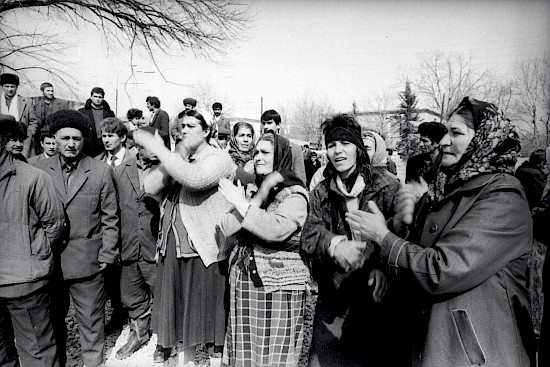
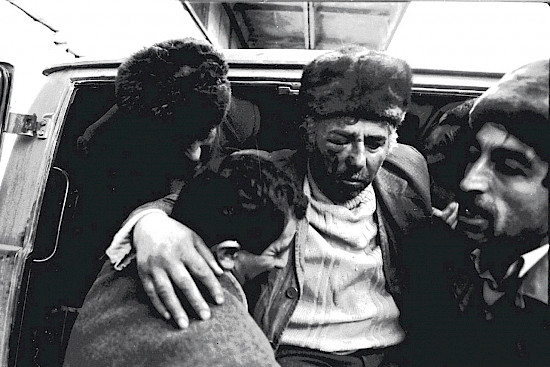
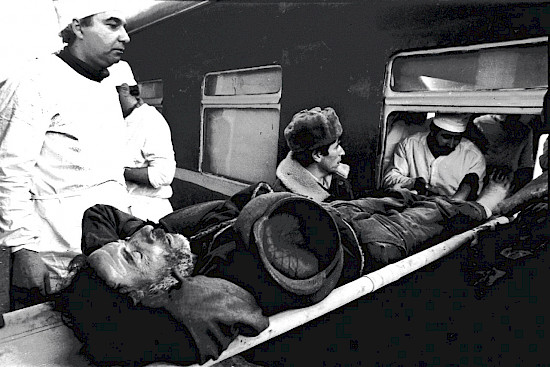
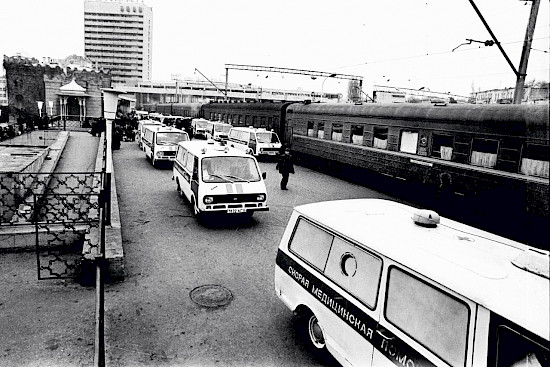
Justice
"The most terrible thing about the tragedy of Khojaly is that none of those responsible for the destruction of the town and its inhabitants have ever been held accountable. Robert Kocharyan and Serzh Sarkisian, the perpetrators of the massacre, made a political career in Armenia by reaching the presidential office. Members of Regiment 366 escaped responsibility too. Alongside Regiment 366, the assault on Khojaly was perpetrated by elite foreign mercenary units, including Monte Melkonian and his thugs. Why is it that, the former MP of the unrecognized NKR, smilingly talks about it in the Endless Corridor film? Confident about his rightfulness and impunity, he rationalizes it, because allegedly "the Azerbaijani national mentality justified the killing of compatriots to achieve the goal." In his theory of racial superiority, he goes so far as to dehumanize the enemy, claiming that Armenians are infinitely superior to Azerbaijanis, and calling the grief for the victims of Khojaly a "jackal's howl."
The Minsk Group negotiations have never raised the issue of bringing the perpetrators to justice. The International organizations never came to grips with the committed crimes. Meanwhile, they must be investigated by the Hague Tribunal. These are war criminals.
"I witnessed the occupation of Azerbaijani lands for almost 30 years. And I always wondered: Azerbaijanis received the neighbours in peace and welcomed them with hospitality. Why was it that the neighbours could not live here with respect and gratitude? Although the world has long since changed and countries that once fought became friends, Armenia has some kind of persistent hate syndrome. This hatred towards its closest neighbours is nurtured on purpose. They deliberately dropped the rating of the "Endless Corridor" documentary about Khojaly on YouTube to prevent the world from learning the truth about their horrible crimes.
I would remind the reader that Mindaugas UrbonaviÊius directed the film, while Alexandras Brokas acted as its producer. More than 14 countries have worked on the footage; it has won top awards at various movie festivals worldwide, ranging from the Eurasia Press International Foundation to the U.S. Accolade Film Competition, including international film festivals in Spain, Germany, Indonesia, etc. Over a billion people have seen the Khojaly documentary worldwide with more than a hundred countries screening it. This year, I went to Canada to watch the screening of the film."
"It makes little sense to expect repentance from Armenian nationalists. However, Armenians like George Vanyan, a human rights activist and head of the Caucasus Centre for Peacemaking Initiatives, believe that things seem quite hopeful. I share his opinion that not until after Armenians overcome their fear will they be able to repent of the crimes they committed in Karabakh. Yet, the Armenian society is not ready to do it right now. Vanyan is an exceptionally peaceful and honest man. He also is being threatened for it; the police charged him a large fine for his remarks about the Second Karabakh War. Recently, they poisoned his dog! I met him in Vilnius. He even invited me to come to Tekali. There are quite a few people like Vanyan but nobody seems to care about their opinions."
"For years Armenia has been creating an influential diaspora in the West, in the U.S., and Russia. Azerbaijan, by contrast, experienced a complete information blockade in 1992-1994. More than 250 magazines and newspapers across Europe worked for Armenia, while many Russian media outlets still represent the Armenian lobby using the information to manipulate public consciousness. As the world community feeds on lies, Armenian nationalists commit new crimes against humanity. Regretfully, the global media still predimonantly sides with Armenia. Recently, I read the opinion of a Western expert claiming that over many years the OSCE Minsk Group has been doing its utmost to ensure that there are no active military operations. Translated into the human language, they did nothing. Not a single Azerbaijani refugee out of nearly eight hundred thousand could return home during the past 28 years of occupation. For almost 30 years, Armenian snipers have fired on peaceful villages. People died. For how much longer could this go on? The Red Cross even built seven-meter high walls around houses in the front line. Still, that never stopped them from shooting. How could anyone call it peace?"
"Over the years, I have often visited the frontline in order to convey to Europe what was going on there, to somehow stop the Armenian snipers and the entire movement of separatism! Coming to help people, I was happy to see those I held dear since the First Karabakh War, as well as their children! I saw these children's parents flee from death on foot: barefoot and frostbitten, they left their homes through the snowy mountain passes. There was a girl from a refugee family in the village of Hasangaya, in the Terter District. Turana Hasanova was a silent girl with large, expressive eyes, full of heavenly light. Not knowing Russian, she could not complain to me that by night, armenians were shooting at their poverty-stricken houses among the ruins. There were no beautiful clothes, just mines and cold winter surrounded her everywhere. Whenever I visited, I would ask, where is my girl? One day, my faithful helper, Ilgar Gasymov, told me that she was gone. During the events of April 2016, she was killed in front of her home. A sniper ruthlessly shot her, as she returned to collect her stuff from the house... When I realized that she was not around anymore, because some Armenian sniper had killed her, I couldn’t utter a single word. A child shot without any human compassion. The words stuck like a lump in my throat."
"So when the victory paraded through the streets of Baku, Turana’s life was part of that history too. May her memory live on forever,
as well as the memory of thousands of martyrs, who gave their lives in this Patriotic War. The greatest justice has already arrived on the Azerbaijani land through the liberation of its cities and villages. The Azerbaijani flag is flying over Shusha! Immense thanks to the Azerbaijani soldiers, and the Commander-in-Chief, President Ilham Aliyev. I always believed that justice will one day be served – all Azerbaijani territories will be liberated. I have always said that negotiations for the sake of negotiations are useless. Western officials and the OSCE Minsk Group representatives were just wasting time: they could not solve anything; they could care less about the plight of almost a million refugees!”
"Have you seen the barbarism in the cities they just left? Why did the world community take no measures to prevent the destruction of human settlements, natural resources, animals, and all the historical heritage of Azerbaijan? The Armenians barbarously burned and destroyed everything on their way out of the occupied lands. One couldn’t tell that it were people who were living there. Everything was looted and turned into ruins. Everything was burned. During the long years of occupation, Armenia turned the large industrial city of Aghdam into a ghost city. Today, it looks like Stalingrad after a siege or Hiroshima after an atomic attack. I am sure that questions about the damage caused by the Armenian occupants will be raised at the international level, too. This damage may well amount to billions.
Once victory is won, hope trumps it all. We will rebuild it. Karabakh will become the centre of attraction for tourists! The world will see the truth about the real owners of this land. I vowed to myself that I will plant a tree, or scores of trees, on that land, once it is liberated. And I will certainly do it."
P.S. The portrait of Christ painted by Shakhin had so captivated Ricardas that he asked the student to sell it to him. "Though I cannot sell it, I can give it to you as a gift," he replied. For many years, Ricardas enjoyed Shakhin's painting of Christ at his Vilnius apartment. Once, when Ricardas was away, he received a call telling him that the apartment had been burglarized. The first thing he asked was: "Has Christ been stolen, too?" When he learned that the painting was still there, Ricardas sighed with relief: it meant that everything was going to be all right.
Monte Melkonian was a famous international terrorist, friend and follower of the "icon" of the world terror, Carlos Ramirez (the Jackal). Since 1978, he fought alongside Armenian militant groups in Lebanon, participated in combat operations of Kurdish terrorists against the Turkish troops, managed to take part in the anti-Shah riots in Iran and then returned to Lebanon. In the early 1980s, Monte Melkonian and a group of his friends revived the Armenian terrorist organization ASALA in Lebanon. In February 1992, Melkonian was an active participant and organizer of the Azerbaijani genocide in the villages Karadaghly and Khojaly. Melkonian is declared a national hero of Armenia
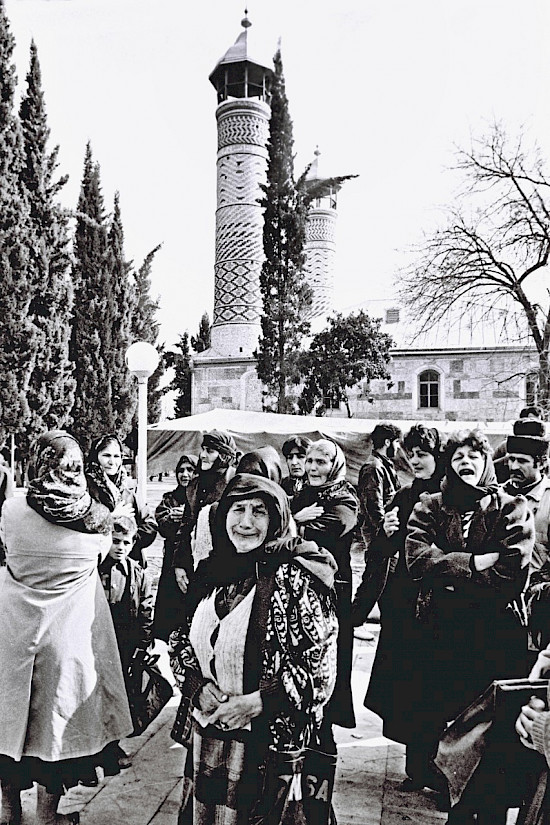
DOSSIER
§
•Armenian military forces commited genocide in the town of Khojaly with
the population of 7000 people on February 26, 1992
•There were 3000 people in the town
•613 people were killed •1000 peaceful people of different
age became invalid during Khojaly genocide •106 women, 63 children, 70 old men were killed
•8 families were completely annihilated
•130 children lost one parents, while 25 both of them
•1275 peace residents were taken hostages, the fate of 150 of them is
still unknown.
§
•According to a February 24, 1994 Resolution of the Milli Majlis of the Republic of Azerbaijan, February 26 was declared as the Day of the
Khojaly genocide.
§
•The “Justice for Khojaly” International Awareness Campaign was launched on May 8, 2008, at the initiative of Leyla Aliyeva, Vice President of the Heydar Aliyev Foundation, chairman of the Azerbaijani Youth Organization
of Russia.

